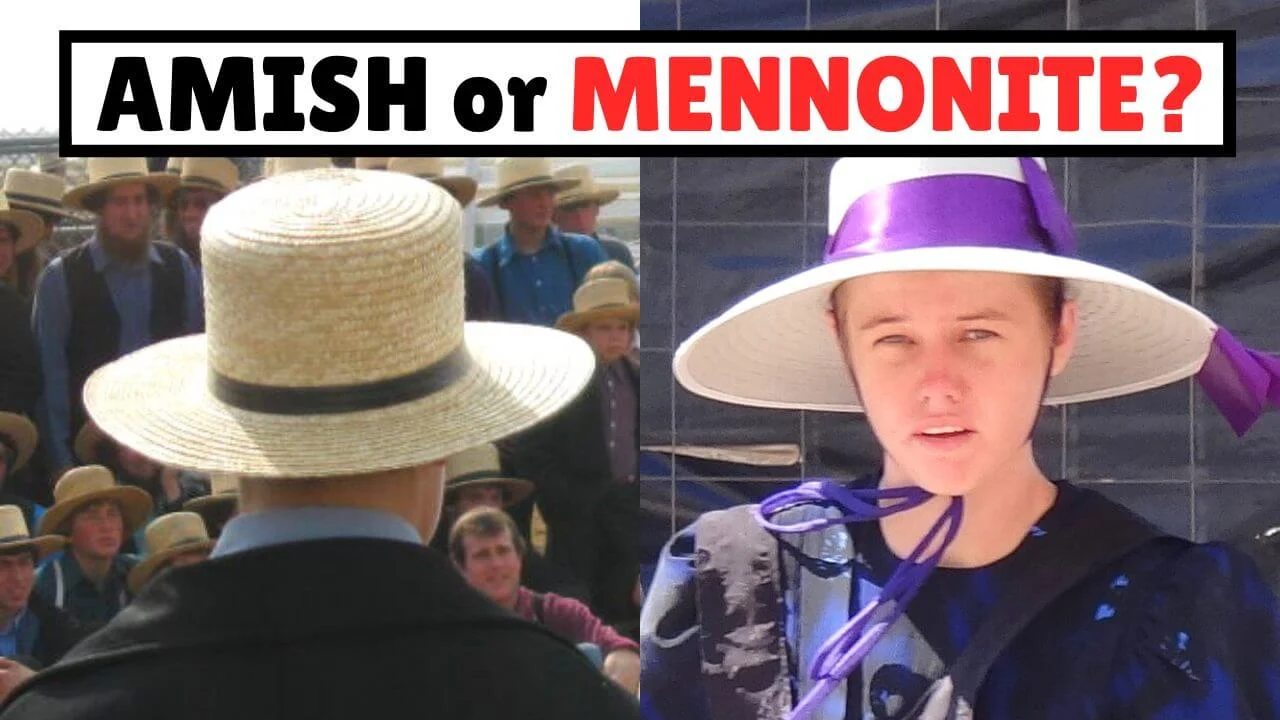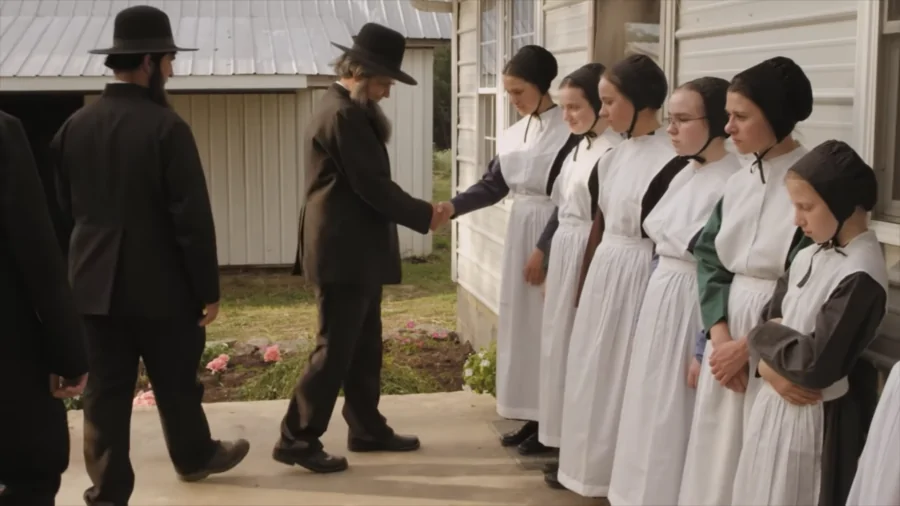Now Reading: Mennonite Amish Difference: Uncovering the Nuances
-
01
Mennonite Amish Difference: Uncovering the Nuances
Mennonite Amish Difference: Uncovering the Nuances

It’s easy to picture horse-drawn buggies, simple clothing, and a life separate from modern society and immediately think of the Amish. But sometimes, the group you’re seeing might be Mennonites. While both groups share a common Anabaptist heritage, there are significant distinctions. Understanding the mennonite amish difference reveals a fascinating spectrum of beliefs, practices, and interactions with the outside world.
Many people use the terms interchangeably, but doing so overlooks the rich diversity within these faiths. From their approach to technology to their styles of worship and dress, the differences are more than just superficial. This guide will walk you through their shared history, explore where their paths diverged, and highlight the key distinctions that define each community. We will clarify the nuances in a simple, easy-to-understand way.
Key Takeaways
- Shared Roots: Both Mennonites and Amish stem from the Anabaptist movement of the 16th-century Protestant Reformation, emphasizing adult baptism and separation of church and state.
- The Split: The Amish, led by Jakob Ammann, split from the Swiss Mennonites in 1693 over disputes about discipline and social avoidance (shunning).
- Technology Spectrum: The Amish are known for their strict rejection of modern technology like public-grid electricity and cars, while Mennonites have a much wider range of acceptance, with many living lives indistinguishable from their non-Mennonite neighbors.
- Diversity Within Groups: Both faiths are diverse. Old Order Amish are the most conservative, while New Order Amish are slightly more progressive. Mennonites range from highly conservative groups, like Horse and Buggy Mennonites, to modern, progressive denominations.
- Appearance is a Clue: Dress codes can be a visible indicator. Conservative Amish and Mennonites practice plain dress, but the specific styles, colors, and rules differ. Many modern Mennonites do not have a prescribed dress code at all.
The Anabaptist Connection: A Shared Beginning
To grasp the mennonite amish difference, we must first travel back to the 16th century. During the Protestant Reformation, a radical new movement emerged called Anabaptism. The name, which means “re-baptizers,” was given to them by their critics. At its core, the movement rejected the common practice of infant baptism, insisting that baptism should be a conscious choice made by an adult who confesses their faith.
This belief was revolutionary and put them at odds with both Catholic and Protestant authorities. Anabaptists also championed the separation of church and state, pacifism (non-violence), and living in communities guided by biblical principles. A key early leader was Menno Simons, a former Catholic priest from the Netherlands whose teachings and writings helped organize and sustain the movement. His followers eventually became known as Mennonites. For over a century, these groups developed their faith under the umbrella of Anabaptist belief, facing persecution for their convictions across Europe.
The Great Schism of 1693
The Amish branch did not exist until the late 17th century. The split was initiated by a Swiss Anabaptist leader named Jakob Ammann. He felt that the Mennonites of his time were not being strict enough in their adherence to the faith’s core tenets. He believed the community was becoming too worldly and losing the discipline that had defined early Anabaptists.
Ammann advocated for stricter church discipline, particularly a more rigid practice of Meidung, or shunning. He argued that excommunicated members should be socially avoided in all aspects of life, including at the dinner table, to encourage them to repent and return to the church. He also pushed for simpler, more uniform clothing and the practice of foot washing as part of the communion service. These proposals were controversial. When the Swiss Mennonite leaders rejected his rigid reforms, Ammann and his followers broke away in 1693, forming their own distinct group. They became known as the Amish. This event is the foundational reason for the mennonite amish difference we see today.
Technology and Modernity: A Key Differentiator
Perhaps the most visible mennonite amish difference is the approach to technology. This is where the two groups have diverged most significantly over time.
The Amish Stance on Technology
The Old Order Amish are famous for their rejection of many modern conveniences. They avoid connecting to the public power grid, owning or driving cars, and using modern telecommunications like televisions, computers, and smartphones in the home. This isn’t because they believe technology is inherently evil. Instead, they believe these technologies can weaken the family, the community, and their reliance on God.
Their governing principle is Gelassenheit, a German word meaning “yielding” or “submission” to God’s will. They carefully evaluate every new technology to see if it will support or undermine their community structure. For example, owning a car could lead to jobs far from home and a less tight-knit community, so they use horse-drawn buggies for local travel. They might use a telephone, but it will often be in a shared shanty at the end of a lane, making it a tool for business, not a distraction in the home.
The Mennonite Spectrum of Acceptance
Mennonites, in contrast, are not a monolith when it comes to technology. Their practices span a wide spectrum:
- Conservative Mennonites: Groups like the Old Order Mennonites (or “Horse and Buggy Mennonites”) live very similarly to the Amish. They also drive buggies, wear plain dress, and limit their use of modern technology. They might, however, be more open to using electricity for farm equipment.
- Moderate Mennonites: These groups may adopt some technology while rejecting others. For example, they might drive cars, but they will be plain, dark-colored models without flashy features like chrome trim. They may have electricity and telephones in their homes but avoid television.
- Progressive/Modern Mennonites: The vast majority of Mennonites worldwide are culturally integrated. They live and work in modern society, use all forms of technology, and are often indistinguishable from their neighbors in daily life. Their faith is expressed through their church community and commitment to service and peace, not through their technological choices.
Understanding Plain Dress and Appearance
Another visible aspect of the mennonite amish difference is their clothing. Both conservative Amish and Mennonite groups practice “plain dress” as a symbol of humility and separation from worldly vanity, but the specifics vary.
Amish Attire
Amish clothing is a uniform of simplicity. Men typically wear straight-cut suits of a solid, dark color, suspenders, and broad-brimmed straw or black felt hats. They are clean-shaven until they marry, after which they grow beards but no mustaches, a tradition rooted in avoiding the flamboyant moustaches worn by European military officers of the past.
Amish women wear solid-colored, long-sleeved dresses with a cape and apron. Their hair is never cut and is worn in a bun, covered by a prayer covering, or kapp. The color of the kapp can signify marital status in some communities. Amish clothing is fastened with simple pins or hooks and eyes, as buttons were historically seen as too ornamental.
Mennonite Attire
The world of Mennonite dress is far more varied.
- Conservative Groups: Women in groups like the Old Order Mennonites also wear a cape dress and a head covering, but the style is distinct from the Amish. Their coverings are often smaller, more rounded, and may be made of a different material, like mesh. The patterns and colors of their dresses might also be subtly different.
- Modern Groups: Most Mennonites today do not wear plain dress. They wear contemporary clothing, and there are no specific rules governing their appearance outside of general modesty. The only time you might see a head covering is on some older women or during a church service, though this practice is becoming less common in progressive congregations. For a broader look at global cultural topics, one might visit a resource like Forbes Planet.
Worship, Language, and Community Life
The core of both Amish and Mennonite life is the church community. However, their services and the languages they use can be quite different.
Differences in Worship Services
Amish worship services are held in the homes of members, rotating every other Sunday. They are long, often lasting three hours, and consist of slow, chanted hymns sung in unison from a centuries-old hymnal called the Ausbund. The sermons and prayers are delivered in Pennsylvania Dutch, a German dialect.
Mennonite services are much more familiar to a mainstream Protestant. Most Mennonites worship in dedicated church buildings. The services usually include hymns (often with instrumental accompaniment), a sermon delivered in English, and Sunday school classes for different age groups. While conservative Mennonite services might retain some German, English is the standard in most congregations today.
Language and Dialects
Language is a significant part of the mennonite amish difference. The Amish almost universally speak Pennsylvania Dutch at home, learn English at school, and use High German for their Bible readings and worship. This trilingual ability is a hallmark of their culture.
Among Mennonites, language use is much more diverse. Conservative groups may still use Pennsylvania Dutch, but the vast majority of Mennonites speak the dominant language of the country they live in. In the United States, that means English is the primary language for worship, home life, and business.
Education and Interaction with the World
Both groups historically valued basic education but were wary of higher education, fearing it would lead people away from the farm and the community. However, their modern approaches diverge.
The Amish operate their own private one-room or two-room schools, educating their children only through the eighth grade. They believe this provides the essential skills of reading, writing, and arithmetic needed for a life within their community. The Supreme Court case Wisconsin v. Yoder (1972) affirmed their right to end formal education at 14.
Mennonites, on the other hand, place a high value on education. While some conservative groups may have their own schools, most Mennonites attend public schools. Many go on to pursue higher education at Mennonite-affiliated colleges and universities or secular institutions. Mennonites are well-represented in professions like teaching, medicine, social work, and academia. They are also known for their global relief work through organizations like the Mennonite Central Committee (MCC), actively engaging with world issues.
A Quick Comparison Table
To summarize the key points, here is a simple table highlighting the general mennonite amish difference. Remember that these are generalizations, and there is great diversity within each group.
|
Feature |
Old Order Amish |
Most Modern Mennonites |
|---|---|---|
|
Technology |
Use horse and buggy; no public electricity; limited phone use. |
Drive cars; use electricity, internet, and all modern tech. |
|
Worship Service |
In homes, every other Sunday; no instruments; in German dialect. |
In church buildings, weekly; instruments common; in English. |
|
Clothing |
Very plain, uniform dress; hooks and eyes; specific hat/kapp styles. |
Contemporary clothing; no dress code. |
|
Education |
Parochial schools through 8th grade. |
Public schools; higher education is common and encouraged. |
|
Language |
Pennsylvania Dutch at home, High German for church, English. |
Primarily English (or local language). |
|
Occupation |
Farming, carpentry, small business within the community. |
All modern professions (doctors, teachers, business owners). |
|
Evangelism |
Do not actively seek converts. |
Believe in sharing their faith and do mission work. |
Conclusion
While the Mennonite and Amish faiths spring from the same Anabaptist root, they have grown into two distinct branches of a family tree. The Amish chose a path of steadfast separation, preserving a way of life that intentionally stands apart from the modern world. Their rejection of technology and strict community rules are designed to protect their faith and culture from outside influence.
Mennonites, by and large, chose a path of engagement. While retaining core Anabaptist values like peace, community, and service, most have integrated into society, using technology and education to live out their faith in the world. The mennonite amish difference is not a matter of one being “right” and the other “wrong,” but a story of two different answers to the question of how to live a faithful life in a changing world. From the Old Order Mennonite driving a horse and buggy to the urban Mennonite pastor managing a church website, the spectrum is wide and fascinating.
Frequently Asked Questions (FAQ)
Can an Amish person become a Mennonite?
Yes, this is quite common. An Amish person seeking a slightly less restrictive lifestyle but wanting to maintain an Anabaptist faith might join a conservative or moderate Mennonite church. This transition is often easier than leaving the faith entirely, as many core beliefs are still shared.
Do Amish and Mennonites get along?
Yes, generally they do. In areas where both communities live, like Lancaster County, Pennsylvania, they often interact peacefully, especially in business. They recognize their shared heritage, and conservative Mennonites and Amish may have more in common with each other than they do with progressive Mennonites.
What is the biggest misconception about Mennonites?
The biggest misconception is that all Mennonites are like the Amish. People often see the word “Mennonite” and immediately picture horse-drawn buggies and plain dress. In reality, these “Old Order” groups represent a tiny fraction of the more than 2 million Mennonites worldwide, the vast majority of whom live very modern lives.
Why do Amish men have beards but no mustaches?
This practice dates back to their origins in Europe. At the time, mustaches were associated with military officers and aristocrats—the very groups that often persecuted the Anabaptists. Growing a beard without a mustache was a way to symbolize their commitment to non-violence and distinguish themselves from their persecutors.
Are all Mennonites pacifists?
Pacifism, or a commitment to non-violence, is a core historical and theological belief for Mennonites. Many hold this conviction deeply and are conscientious objectors to war. However, like with other practices, the personal application of this belief can vary among individuals in more progressive Mennonite churches.

















